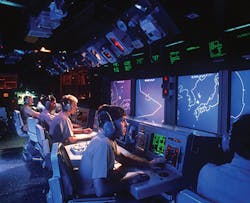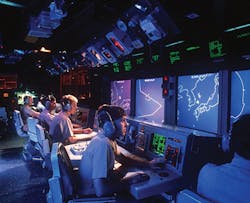Navy asks for electro-optical dome of imaging over surface warships
ARLINGTON, Va. - U.S. Navy researchers are pursuing an initiative to use electro-optical sensors to improve the situational awareness of surface warship crews. They seek to develop a visible-light and infrared sensor able to image the entire area around the ship, from 360 degrees of horizon to straight above the vessel.
This imaging dome would provide situational awareness in the open ocean, along coasts, and inside harbors to detect, locate, and track potential airborne and surface threats. Office of Naval Research (ONR) officials in Arlington, Va., issued a request for information (N00014-16-RFI-0002) for the Hemispherical Imaging for Situational Awareness project. ONR experts also released a request for information for the Imaging Through Obscurants project, which seeks to develop electro-optical shipboard electro-optical sensors able to see through fog, haze, rain, and snow.
The Hemispherical Imaging for Situational Awareness project seeks the ability to monitor the entire hemispherical dome (360 degrees azimuth by 90 degree vertical) for potential threats around surface vessels. Conventional imaging sensors are too inefficient for this job, and would lead to single frames with hundreds of megapixels of data, more than 90 percent of which do not contain meaningful or relevant information.
Navy researchers also are trying to deal with challenges of creating an imaging dome around surface ships. The vertical angle changes from near the horizon to directly overhead, for example, and the background and expected threat signatures change dramatically with range and angle.
Researchers are primarily interested in visible-light and infrared sensors for this project because of their superior resolution, but they are considering passive millimeter wave sensors for their ability to image through clouds, dust, fog, and rain.
The goal is to find unconventional approaches to full hemispherical imaging for situational awareness, and generate data more efficiently with high probability of detection and low false alarm rates.
More information is online at www.fbo.gov/spg/DON/ONR/ONR/N00014-16-RFI-0002/listing.html.

